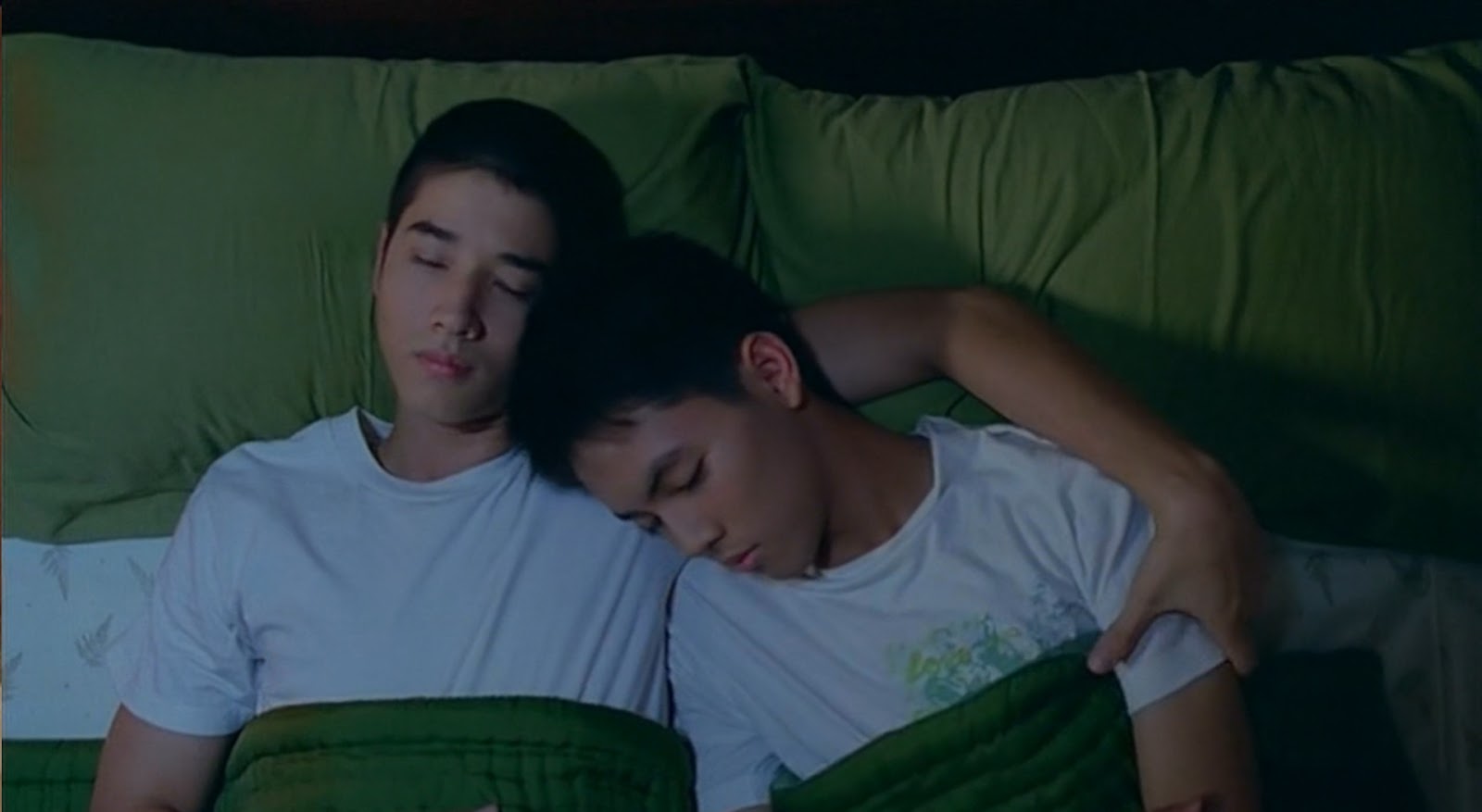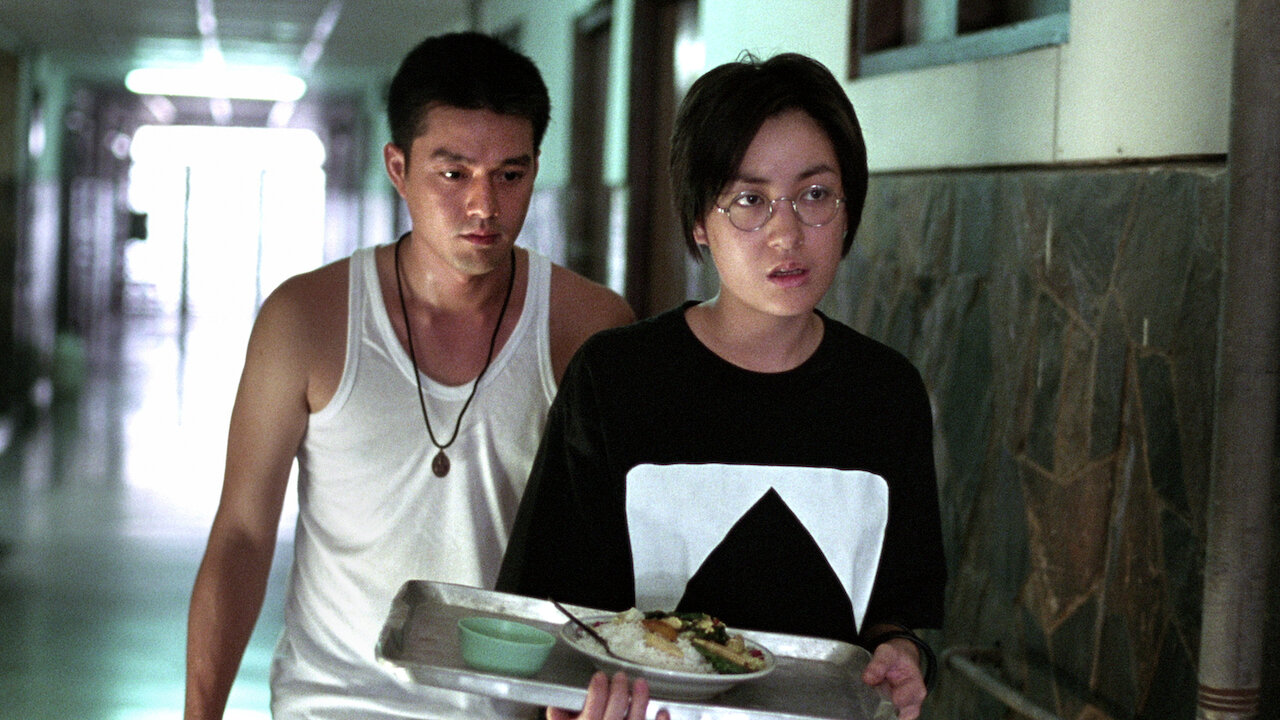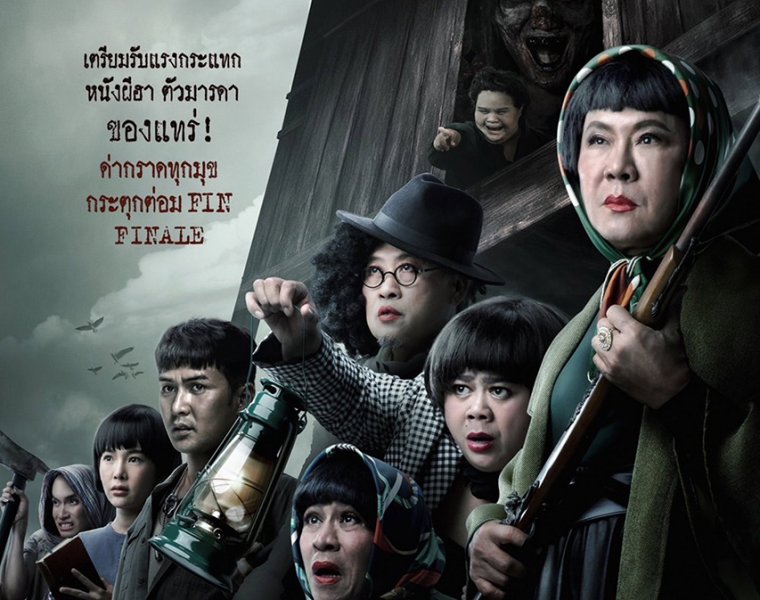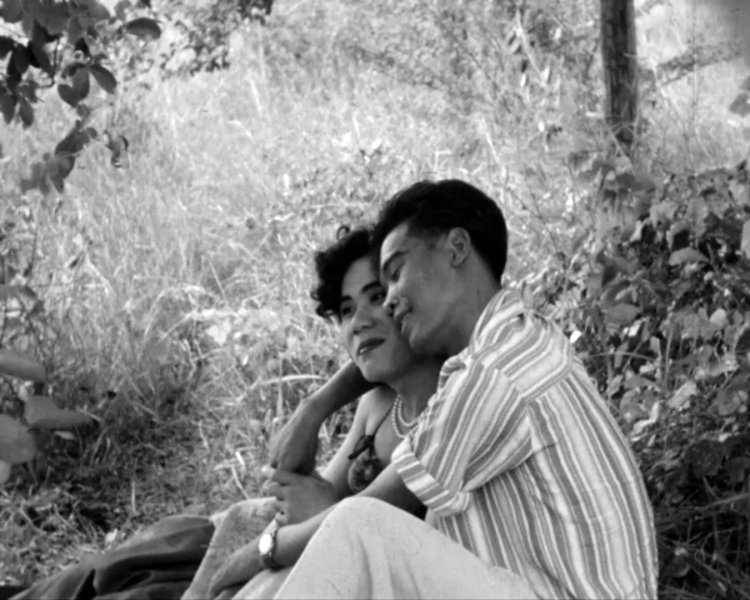In March 2024, the 10th installment to Poj Arnon’s comedy horror franchise “Hor Taew Tak” (Oh My Ghosts!) was released. Known for its experimental style and pop culture references, it stars a group of kathoey (transgender, transexual, gay or effeminate men) getting spooked by supernatural entities.
Photo: "Hor Taew Tak: The Finale" / SF Cinema
Raking in around B50 million in just four days, the film grabbed the public imagination. Unsurprisingly, when an X (formerly Twitter) review stated “What’s on screen couldn’t even be called a movie,” the critic was quickly lambasted by their lack of media literacy.
The conversation died down as fast as it arrived. But it does raise the question: How did queer characters find such a successful place in Thai cinema? From the butt of the jokes to objects of desire, who gets to be in the spotlight and who is left in the dark?
Sidekicks
Photo: "It's All Because of a Kathoey" / Thai Film Archive
Sanchai Chotirosseranee, deputy director of Thai Film Archive, tells BK the first evidence of a Thai queer film can be traced back to “
It’s All Because of a Kathoey” (1954). The 13-minute silent short follows a mysterious woman who turns up at a snooker club. There, the group of men began pursuing and fighting each other for her attention. In the end, her wig comes off and it’s revealed that she’s a kathoey.
“The very first Thai queer films were already using kathoey as a source of comedy,” Dr Atit Pongpanit, vice dean for research and international affairs at the Faculty of Social Sciences, Naresuan University points out. “All the men are chasing after this kathoey character because of her desirability, but when it’s revealed that she’s not a ciswoman, it becomes humiliating.”
That being said, Atit remarks that in the film the kathoey is actually engaged to one of the men, which brings into question how long they have been dating. Was the fiance aware? And did he accept her?
Photo: "Viva Par Fun" / Thai Film Archive
Even by contemporary Thai media standards, early Thai queer films tend to have more diversity and fluidity of gender and sexual identity.
“In those days, the use of the term kathoey itself doesn’t exclusively refer to transwomen but refers to both male and female who have sexual behaviors or gender identity that don’t conform to normativity,” Atit says. “In “Viva Par Fun” (1971), there’s a kathoey maid that dresses and acts effeminately while having sexual desires for women. In contemporary Thai queer cinema, if you use the kathoey’s gender identity, then they’re immediately prescribed an attraction to men.”
Villainized

Photo: "Kon Gin Mia" / Thai Film Archive
In the 60s-70s, with the influx of Western media and psychological school of thought, this ambiguous attitude toward queer characters began to shift. Sanchai brings up “Kon Gin Mia” (1974) which portrays an uncle that not only fell in love with his own nephew but even went on to drug his nephew’s wife.
“The movie presents this character as someone with a mental disorder. He was bisexual, incestuous, and it made him seem like he had an insatiable libido,” says Sanchai.

Photo: "Wai Rian Pian Rak" / Thai Film Archive
Similarly in “Wai Rian Pian Rak” (1985), the film chalks up “sexually deviant” characters to a bad upbringing. The message was clear: if properly groomed by guardians, these misguided teens could end up in heterosexual relationships. In the end, a tomboy who can’t get over their feelings has an outburst and public mental breakdown when their ex-girlfriend marries a man.
Media representation of women loving women is sparse and often portrayed as a phase or a trend. Often, tomboy (butch or masculine presenting women) are treated as a challenge, a sexuality that can be changed when the “right” man comes along. Up until the recent rise of Girl Love series, queer women are usually relegated to the background, working as the mental support to their queer male counterparts while they themselves are nearly devoid of sexuality
Pitied

Photo: "The Last Song" / Thai Movie Database
This problematic outlook on LGBTQ+ characters would continue into the 80s. But in the same year, a new trope of queer stories would be introduced. After a conversation with queer showgirls, the director Pisan Akaraseranee felt sympathetic and wanted to turn their life story into a film.
Enter “The Last Song” (1985), a film that depicts a kathoey showgirl committing suicide after her male lover left her for a ciswomen. Though it is considered a cornerstone in Thai queer cinema for humanizing queer characters, the tragic unrequited trope reinforces the idea that queer people are cursed, unable to find true romantic love or social acceptance.
In the localized practice and interpretation of Buddhism, we see that karma is used to explain queer people and why they can’t find happiness in this lifetime, Atit notes and adds, “You’re already seeing queer people as lower than you if you view them as someone with attached karma who must be punished for their past sins.”
Empowered

Photo: "The Iron Ladies" / MonoFilm
Helmed by “Iron Ladies” (2000), the next wave of commercially successful queer films arrived. The movie, which was a hit among Thai and international audiences, is about a team of volleyball players made up of effeminate gays, kathoey, transwomen, and a tom boy coach, overcoming discrimination and winning over the support of fans across the country.
It’s one of the first queer films that shows the diversity and support system in the LGBTQ+ community. To a certain extent, it’s a call for rights and promotes the idea that queer people can find joy and fulfillment in their life. Though it still uses Buddhism to explain their suffering, unlike “The Last Song,” when Pia, one of the kathoey showgirls is dumped by her man for a ciswoman, she moves on to start a successful career in China.
In Serhat Ünaldi’s paper on “The Cinematic Regime of Representation of Kathoeys and Gay Men in Thailand”, they explain that the success of “Iron Ladies” can be attributed to an easy to follow, traditional story arc with an ensemble cast. These traits were familiar to straight audiences. Thus, making it an easier sell.
Films that followed the success of Iron Ladies underscores the feeling of national pride. “Thainess matters, not gender.”
It’s clearly still a popular narrative today as seen in the latest “Oh My Ghosts!” film which ended with a scene that recreates the 2024 Sukhumvit 11 brawl that broke out between Thai and Filipino kathoeys.
Bound by the Binary

Photo: "Love of Siam" / Thai Film Archive
Atit mentions that mass audiences tend to be more accepting towards kathoey, especially in comedic roles. As Peter A. Jackson explains in “Tolerant but Unaccepting: The Myth of a Thai ‘Gay Paradise,’” kathoeys are considered women “born inside a man’s body” while gay men are regarded as a “perverted form of manhood.”
One of the first successful gay films that could foreshadow Thailand’s lucrative market for Boy Love series was “Love of Siam” (2007). At first audiences were shocked when the two male leads expressed interest in each other, but what followed was a genuine connection with the viewers. The film tried to convey a realistic coming of age experience and the growing pains that came with it, sexuality was just one facet.
Sanchai explains that BL had very different origins from LGBTQ+ movies. It’s based on comics and a fantasy of good looking male characters getting together without even explicitly identifying themselves as gay.
“If you’re playing a seme [the active pursuer or the top] or the uke [the bottom or the passively pursued], there’s a certain look to be expected.”
Photo: "I Told Sunset About You" / Netflix
Naruebet “Boss” Kuno the director of “I Told Sunset About You” (2020), a critically acclaimed BL series that was the top trending hashtag on X during its release, says that playing by the binary rule book does pay off, but diversity in plot and characters and harking back to Thai LGBTQ+ realities has also proven to be a success.
While selecting lead actors, Boss recounts that even though the script never explicitly details the character’s look, there had been concerns that Krit “PP” Amnuaydechkorn would look too sweet for the lead role.
“I think if PP is a sweet looking boy but he fits the character, then he should get this role. He should get to be himself and showcase his abilities. In the end, it does prove that if we don’t limit the actors and we actually let them be, there will be so many other people who will love them for who they are.”
Dr. Narupon Duangwises, head of research and academic support at Sirindhorn Anthropology Centre, notes that straight actors taking on BL or gay roles could be a positive thing.
“But if the actors don’t do their research on the culture and lifestyle, they won’t be sensitive enough to speak on behalf of or respect the community which the character represents,” Narupon adds.
Underrepresentation

Photo: "Sayew" / Netflix
The elephant in the room is that so many identities under the LGBTQ+ umbrella are forgotten. Bisexuality like the representation we see in "Kon Gin Mia," for example, can still be demonized, as Clare Hemmings explains in her essay “Resituating the Bisexual Body,” linking the idea of bisexuality to untrustworthiness because bisexuals seem like a “double agent.”
In the past few years, there has been a rise in Girl Love content. However, Narupon says, “GL is still quite niche whereas BL has the kind of fanbase similar to a boyband or male idols.” Boss also confirms this widespread appeal when he mentions that fans of “I Told Sunset About You” extend to women in their 40s.
Though there’s arguably a saturation of kathoey and gay men in Thai media, there is less intersectionality between queer characters who don’t follow traditional beauty standards, queer characters with disabilities, and older queer people.
The Future
Photo: "Solids by the Seashore" / Facebook
Narupon predicts that BL series will diverge in genre, going outside the basin of romantic, drama, comedy and leaning into elements of fantasy like time traveling, period pieces, and even sci-fi.
With more variety in the audience and the hopeful legalization of equal marriage, Attit suspects that there might be more stories about queer families and LGBTQ+ stories that also link to other aspects of the human experience.
“There’s such a stereotype in the past that queer people can’t find love, but now it seems like we’re getting recognized even in the
legal domain. I think that’ll change the repetitive representation and we’ll move on to media that interrogates LGBTQ+ issues along with other important social issues.”
Want the very best stories from BK Magazine delivered straight to your inbox every Thursday afternoon? Sign up for BK Weekly and stay up to date on what’s new and cool in Bangkok.






